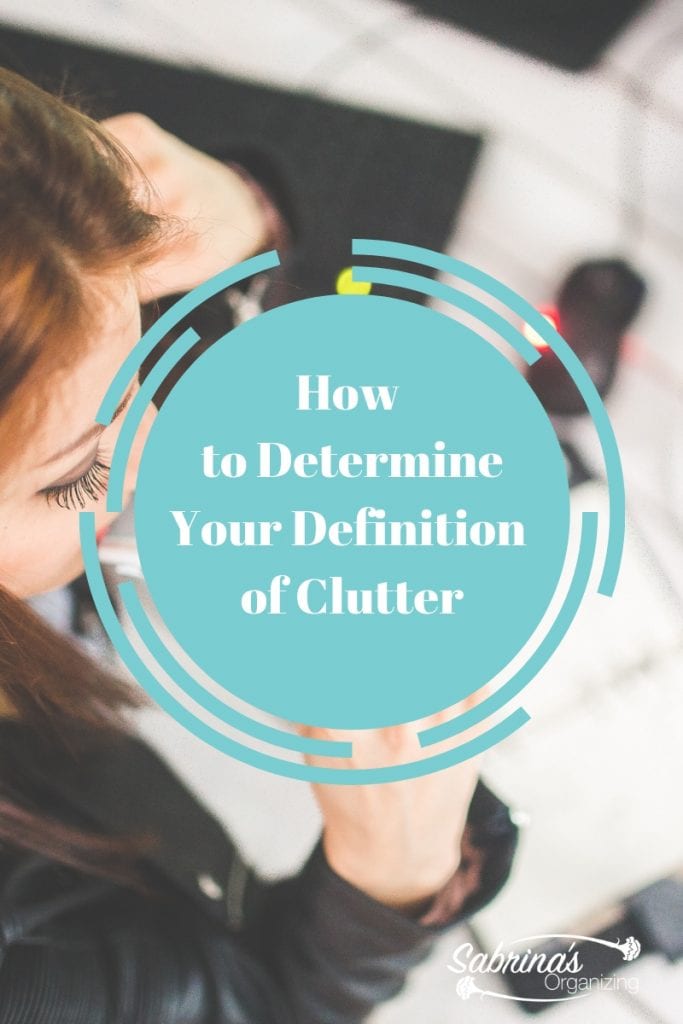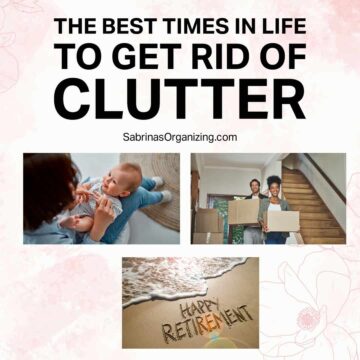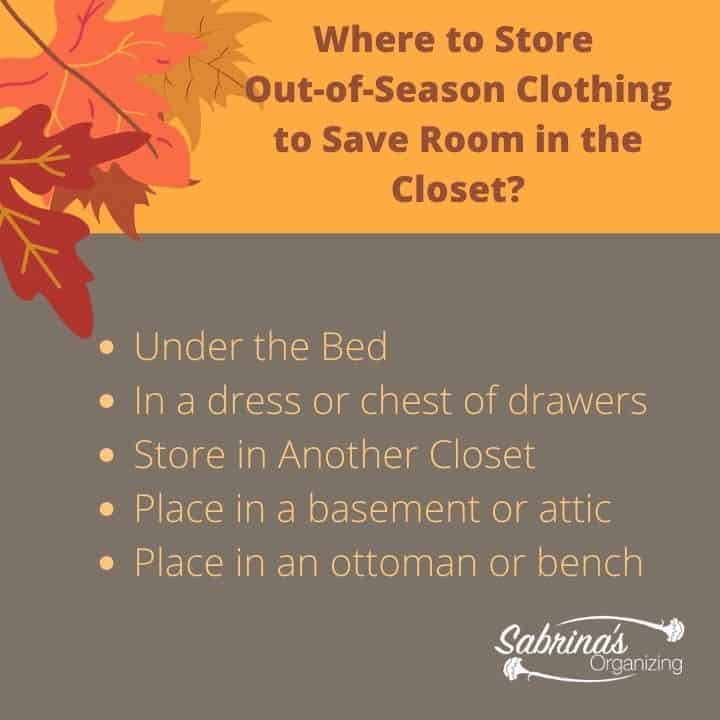Each person can handle clutter in different ways. One may be able to function with clutter around them. Piles and piles of stuff. Only they know what is in them. Others may be overwhelmed with a bit of clutter lying on the floor in the bedroom or living room. And even other people may fall between these two types of individuals. Determining your tolerance for clutter will alert you to when the area needs clearing. This post will talk about ways to help you determine your clutter tolerance. And, hopefully, inspire you to remove the mess affecting you right now.
First, go around your home and write down the places that bug you the most. Make a punch list and include the room name and the clutter piles in that room on the paper. When buying a new home, you get to make a punch list to give to the builder before you go for settlement. This list includes all the things that still need to be finished. On this premise, you will use this punch list to determine the incompletions (clutter) in each room.
Jump to:
- How to figure out how much clutter will bother you?
- Now, examine each "cluttered" area and determine its priority.
- Next, determine the characteristics of this clutter.
- Now, mark with a star to indicate the thoughts of the clutter that truly sparks some negative emotion.
- On a separate piece of paper, write up all the incomplete clutter you started. These are the ones that bother you the most.

How to figure out how much clutter will bother you?
The first step in determining your tolerance for clutter is the examine your area and decide what is enough clutter for you.
Now, examine each "cluttered" area and determine its priority.
Ask yourself, "What bugs me the most in this room?" Start with number 1. One would represent the most important and the clutter that most likely bothers you the most. It must be cleared immediately to help you feel better in your room. Determine how you feel about the clutter. Does the mess stir up any emotions you may have from a past memory? Write down what it stirs up for you next to the cluttered area on the list.
Next, determine the characteristics of this clutter.
Examine how high the pile is; does a particular height bother you? How about the width of the pile? Does it bother you that it is lying on the floor? How about the piles of stuff on the counter or dining room table? Does it bother you that you or someone else put the pile of things in that place? Write all these answers down on your punch list.
Now, mark with a star to indicate the thoughts of the clutter that truly sparks some negative emotion.
Feelings of sadness, anger, frustration, disappointment, and a sense of overwhelm are just some of the feelings you could be experiencing when looking at this clutter. How many stars did you add to the incompletions on your punch list?
On a separate piece of paper, write up all the incomplete clutter you started. These are the ones that bother you the most.
Examine this list and see the similarities with each of the different starred clutter items. This streamlined list now tells you not only what bugs you the most with clutter but also informs you about the areas that need doing first. Amazing, right?
These characteristics you starred and examined now will alert you to what you don't like about a particular clutter. The emotions you are aware of will be the alarm telling you when to clear the clutter.
Feel free to visit some other posts that talk about clutter tolerance:
The Simple Guide to a Clutter-Free Home
Why Highly Sensitive People Need Minimalism
Clutter Control: Is Too Much 'Stuff' Draining You?
Some people may feel angry, sad, frustrated, or overwhelmed looking closely at these incompletions in a room. Remember, by looking at these areas and spending the time to determine why this clutter bothers you so much, you will understand more about yourself and how you would like your life and home to be. Be brave through this process, and you will become more knowledgeable about yourself and what you want in your home. I hope this motivates you to clear the unwanted clutter and find your clutter tolerance quickly and easily.
If you need help feeling more in control of your tasks and day, I can help! Check out my virtual consultation sessions. I offer three options that will help you conquer those tasks.
Visit our other posts about changing habits!











Katherine Macey says
I love this detailed breakdown! You make an in-depth process simple to follow. Thanks for sharing this!
Janet Schiesl says
I find asking the right questions helps to determine your definition. I love to watch client find their "ah-ha!" moments. I worked through this myself many years before starting my business very organically. I would find something that wasn't working for me and then focus on fixing that. Once that was good, I'd find something else.
Julie Bestry says
Taking time to really see, with fresh eyes, what's going on in your space and then identifying an action plan is often beyond what most people feel capable doing. We all have different comfort levels with different kinds of clutter. I like to build up a few days of paper clutter before clearing it because the clearing of it is zen-like for me; but kitchen clutter? Oh, no! And we all develop bits of clutter blindness in tiny (or not-so-tiny) corners of our lives.
Jill Katz says
What an insightful post! Clutter starts with our own definition of what bothers us and why. I love how you call a person "brave" for going through the process of determining what piles or stuff bothers us and why. It is brave to pause and think about what we would like to change and understand the underlying layers. It's not for the meek! Your post is inspiring me to take another look at my home to see what I want to change and why.
Jonda Beattie says
I like "Ask yourself, "what bugs me the most in this room?" Start with number 1. One would represent the most important and the clutter that most likely bothers you the most. It must be cleared up immediately to help you feel better in your room." Finishing one area before moving on allows you to feel the change.
Diane N Quintana says
I like the way you ask how much clutter can you tolerate and ask for the height and width of the pile. Some people truly need things in a space to feel comfortable. Reducing the pile rather than eliminating the pile is best for them. A problem happens when there are diametrically opposing ideas regarding clutter in the same family. Compromise, in that case, is the way to go.
Janet Schiesl says
I remember I moment of clarity. I live in a home where the kitchen, eating area and family room at kind of one big room. When my kids were young I remember deciding that I didn't like when I looked across the room and saw things on the floor. I wanted to have a clear view across the floors of the room. I knew that was impossible 24/7, but I vowed to pick up and have my kids help everyday so I'd have at least a few moments of zen each day.
Nancy Haworth says
These are wonderful tips. Creating a punchlist like this will really help to determine where to begin with decluttering. Discussing clutter tolerance together, especially among couples, can really help to bring harmony to a home. Thanks for this helpful article.
Linda Samuels says
Clutter tolerance is something I frequently discuss with clients. The concept comes up often when I'm working in a home where people have different perspectives on what clutter is and their particular clutter tolerance level. Frequently, there are conflicts. One person doesn't see or mind the clutter. Another person might be hyper-sensitive to anything being out of place. Talking about the concept comes first, and then we work on establishing boundaries, personal zones, and reconciling differences.
Seana Turner says
This seems like a "mindful" approach to clutter control. Taking the time to examine what is really troubling you and understanding the why would be so helpful for tackling the issue. My mind immediately thought the next step should be to sit down and talk with others who share your space about your findings. Maybe see if they would go through the same exercise... could be enlightening, especially in regards to what the next step should be!
Sabrina Quairoli says
Good point. Many people don't put in the time to determine a plan with others on the shared places.